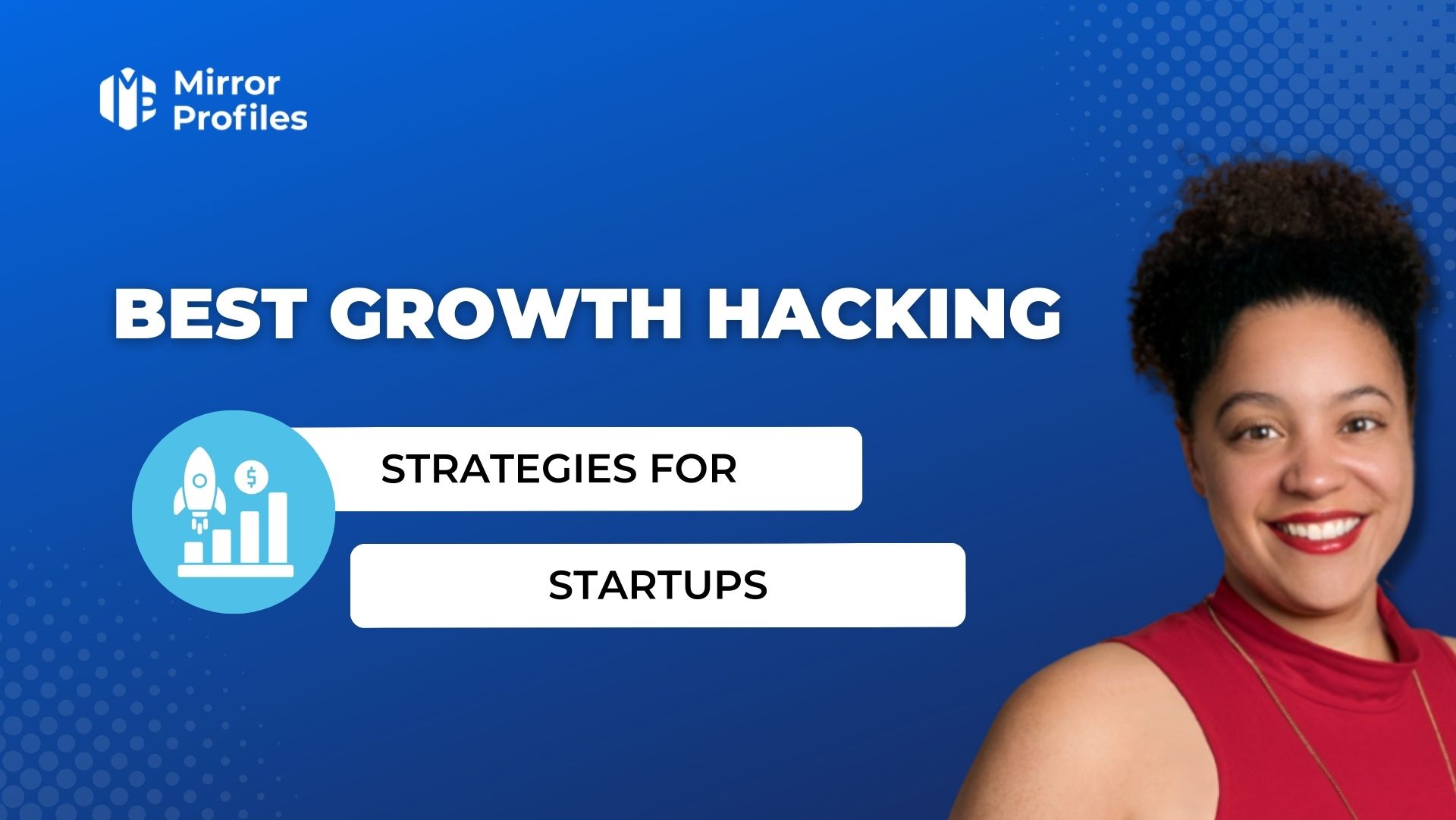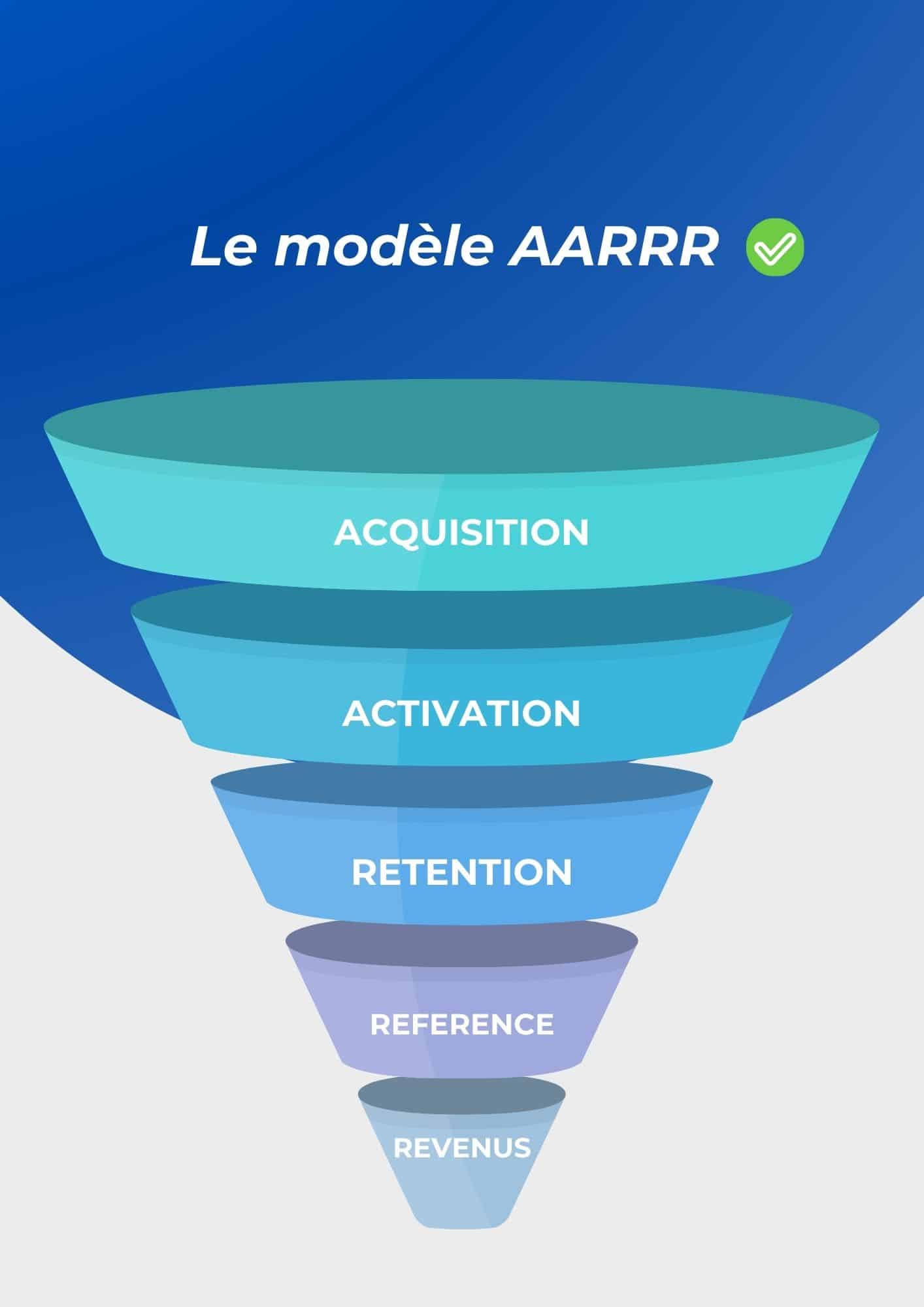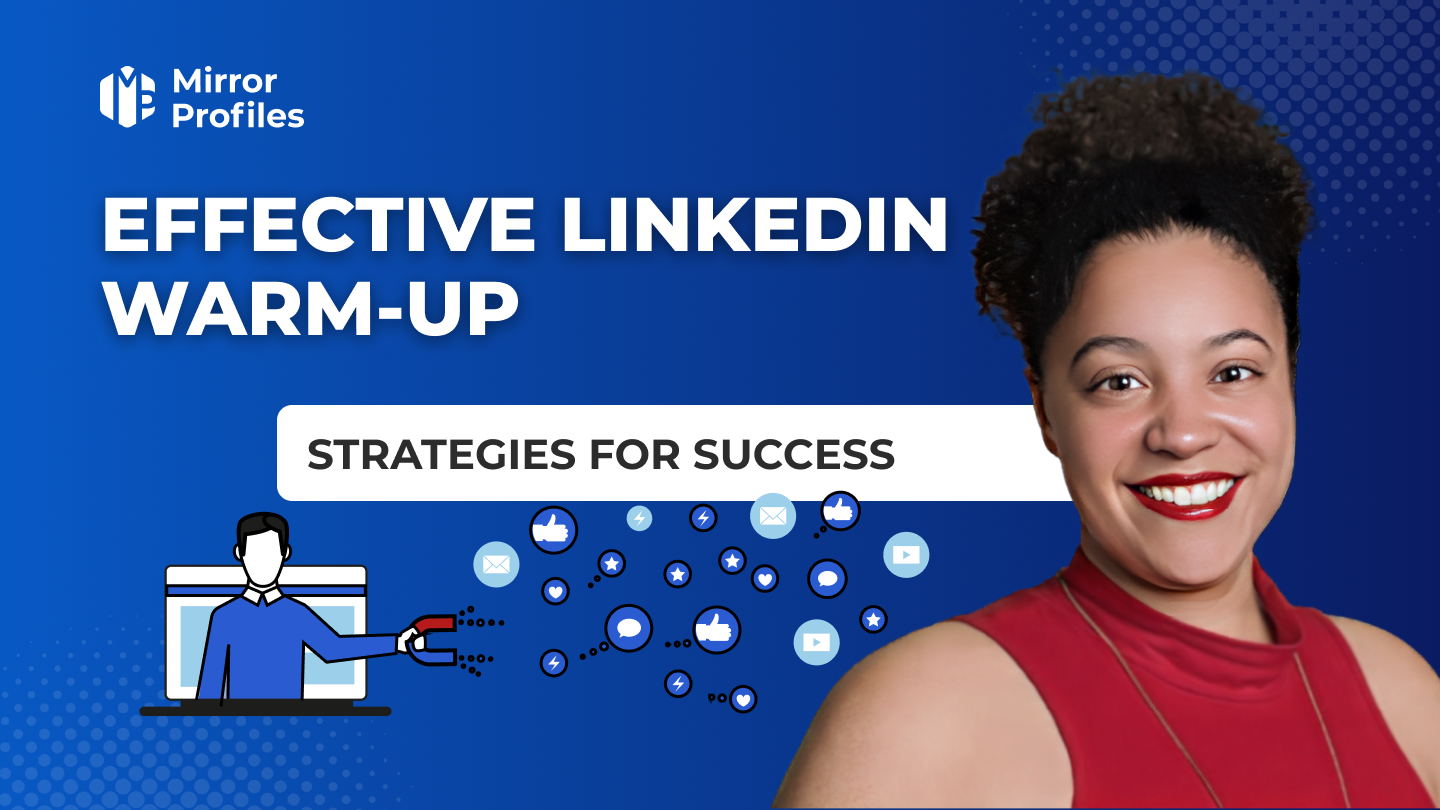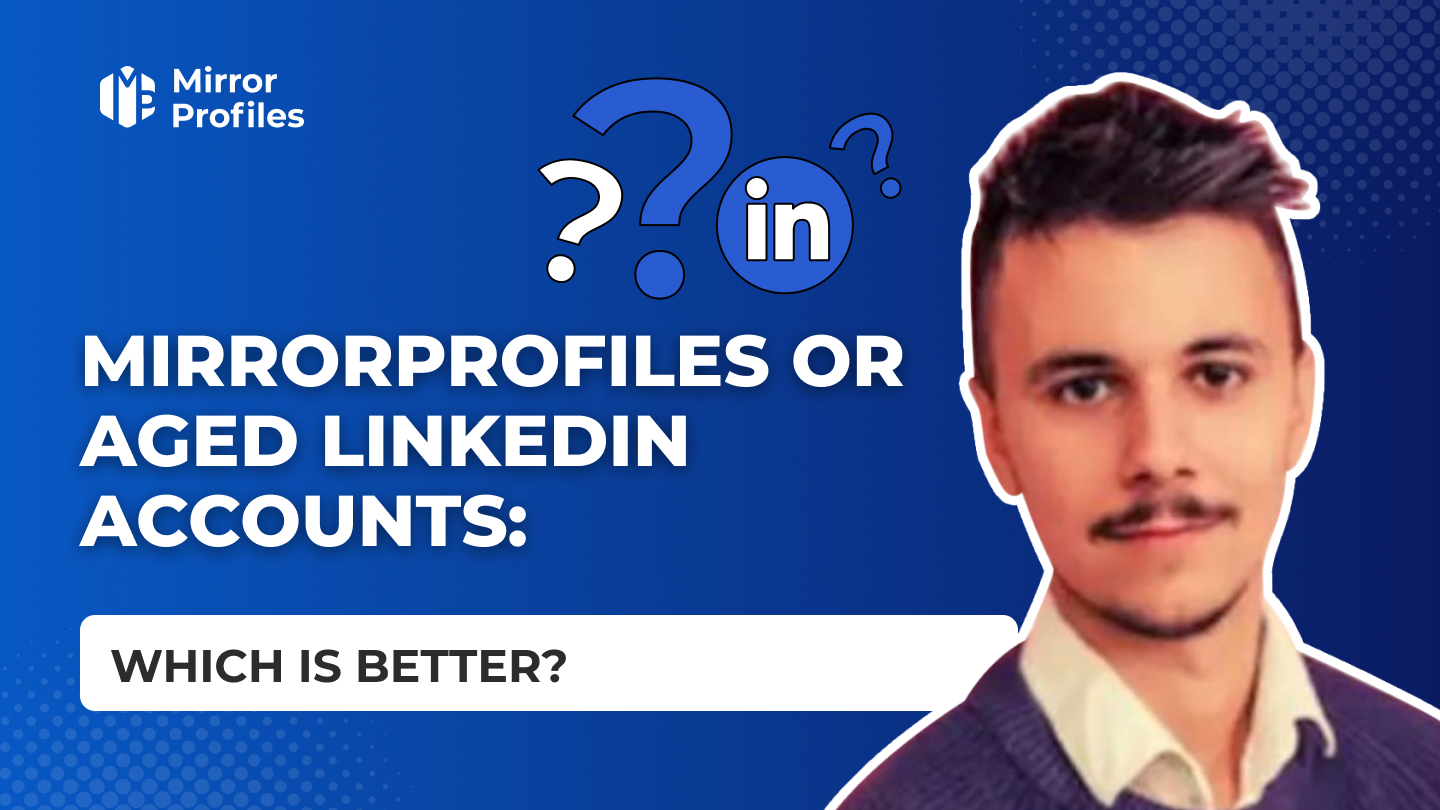Introduction
Growth hacking, an essential term in the world of startups, focuses on accelerating a company’s growth through creative, innovative and cost-effective techniques. This growth technique focuses on continuous experimentation to find the most effective growth marketing, product and distribution strategies. Growth is perfectly suited to entrepreneurs wishing to promote their project on a limited budget, while attracting and retaining a large number of users or customers.
Here, we explore the most effective growth hacking techniques for startups, following the AARRR model, which defines the five key phases of the customer journey: Acquisition, Activation, Retention, Revenue and Recommendation. We’ll then illustrate our point with case studies of successful products such as Airbnb, Dropbox and Spotify. Finally, you’ll discover tips on how to become an effective and efficient growth hacker.
Understanding and using the AARRR marketing model
The AARRR marketing model is an essential tool for startups wishing to boost their development and acquire customers. This growth marketing technique describes the customer journey through five key phases: Acquisition, Activation, Retention, Referral and Revenue. Each phase has specific marketing objectives and key performance indicators (KPIs) that need to be measured and optimized. Let’s take a look at how to implement this model to improve your growth marketing technique.
Acquisition: effectively attract your initial audience
As part of inbound marketing, for your startup, this first step aims to bring visitors to your website or mobile app through various growth hacking strategies. In the context of outbound marketing, we’re talking here about the prospecting file stage. For Linkedin, we could go even further and say that this concerns all users who have received a connection request, without noting a common tactic in growth hacking to maximize your startup’s reach.
Successful acquisition of your startup requires judicious use of channels such as SEO content, SEA, social networks, email marketing and content marketing. The choice of channel should take into account your target audience, your financial resources and what you have to offer. Key indicators to monitor include traffic volume, cost per acquisition (CPA) and conversion, key metrics in growth hacking strategies.
There’s no need to be afraid of volume here, because as the funnel image clearly shows, there will be a significant loss up to the “Income” stage anyway. That’s why we invented MirrorProfiles. Our tool allows you to bypass Linkedin quotas and contact thousands of users on Linkedin to feed this stage of the AARRR technique.
Activation: turning a visit into a positive experience
The aim of growth hacking activation for your startup is to turn the visitor into an active user of what you have to offer. To achieve this, it’s important to offer an attractive, motivating user experience that encourages action. Setting up a simplified registration, offering a demo or free trial and providing a tutorial are examples of possible actions. Relevant KPIs here include the number of active users, activation rate and time spent on your platform, key indicators in the growth hacking approach.
Outbound prospecting concerns the objectives of your campaigns: number of responses, number of meetings or demos. But it can also be more marketing-oriented: the number of white paper downloads, webinar registrations or new visitors to the site.
Retention: cultivating loyalty and maximizing long-term value
Retention is about keeping users interested so that they continue to use your service or product on a regular basis, a phase where growth hacking can offer innovative solutions. This means generating value, satisfaction and trust. Exemplary customer service, regular updates, personalized notifications and loyalty programs are all ways of achieving this. The KPIs to monitor are the number of loyal users, the retention rate and the churn rate, essential for evaluating the effectiveness of growth hacking strategies.
Reference: promoting sharing and recommendations
The referral stage, crucial in growth hacking, aims to encourage satisfied customers to talk about your startup, product or service to others. To stimulate word-of-mouth, it’s important for your startup to create a sense of virality and belonging, by arousing emotions and offering rewards. Using storytelling, collecting testimonials, encouraging social sharing and developing referral systems are all effective techniques. For performance indicators to monitor, think about the number of recommendations, the recommendation rate and the virality coefficient, measures that reflect the impact of growth hacking efforts on user promotion.
When it comes to sponsorship systems, the question of what to offer in exchange comes up regularly. Keep in mind that these are your customers, so they’ve come to look for the solution in your product or service. Becoming an ambassador for your company can then trigger more personalized advice, discounts on your products or early access to new features. The classic commission approach still works, but you’ll want something that’s unique to your company.
Revenue: monetize intelligently and increase the average basket
To use growth hacking to increase your startup’s revenue, you need to boost sales and increase income. To get started, you need to develop a customized business model, set a competitive price, and develop upsell and cross-sell strategies. For example, consider offering premium packages, subscription systems, additional options or complementary products. Key performance indicators (KPIs) to monitor include number of sales, average revenue per user (ARPU) and customer acquisition cost (CAC).
Product-oriented growth hacking strategies
Growth hacking is all about optimizing your product to meet users’ needs and stimulate your company’s growth. Let’s take a look at some effective product-centric strategies.
The product itself as a growth driver
In growth hacking, using the product as an acquisition and recommendation tool is a key approach. For example, Hotmail inserted the phrase “PS: I love you. Get your free email at Hotmail” at the end of every email sent by its users, resulting in a growth spike, reaching one million users in just six months. In growth hacking, acquisition channels are often limited to SEO / SEA / Mail / Linkedin and telephone. But your product (or service) can be used as an acquisition channel. It’s often underestimated, yet formidable. Using your product in this way will help boost word-of-mouth. In B2B as in B2C, recommendation or word-of-mouth is a very powerful vector for lead generation, as it has a high conversion rate.
Freemium and free trial versions
In growth hacking, offering a free version with limited functionality can be effective in generating strong commitment and encouraging the transition to a paid offer. Spotify illustrated this technique by offering an ad-funded free streaming service, to entice people to subscribe to their Premium service for an ad-free experience with more features.
However, this really depends on the product. The last thing you want is to come across vanity metrics. Indeed, the risk of freemium is to have a product that only appeals when it’s free. Everyone likes it when it’s free, and whether it’s in terms of returns or even from a financial point of view, I’m not a fan of this technique.
Generally speaking, the freemium growth model is suitable for businesses where the cost per user is extremely low, or where the real product you’re selling is the data you’re collecting.
Strategic integrations and partnerships
In growth hacking, link up with other influential platforms or create strategic partnerships to boost product visibility and credibility. For example, by leveraging Craigslist’s reputation for its classifieds service, Airbnb was able to accelerate its growth by reaching a large audience of potential tenants and owners.
Partnerships are a growth strategy that will enable you to move on to the next stage, for 2 reasons:
- They boost your visibility among your target audiences, and even those you didn’t know you had.
- You’re building a long-term business based on relationships, not just a product.
Partnerships shouldn’t be denied, or even limited, because we’re too focused on product development. Indeed, as many stories show, sometimes it’s better to have a lesser product but powerful marketing and partners.
Virality and integrated sharing mechanisms
In growth hacking, encouraging product sharing between users through rewards to catalyze natural growth. Dropbox has excelled in this area, offering additional storage space for every new sponsored user, quadrupling its user base in fifteen months.
Using marketing automation: the benchmark growth strategy
Marketing automation uses sales prospecting tools or specific platforms to handle recurring or complex marketing operations. In addition to saving valuable time, this growth approach minimizes errors, increases efficiency and enhances personal contact with prospects and customers. Automation is a central technique in growth hacking that applies to various phases of the buyer cycle, including sending personalized emails, managing leads, segmenting your audience, evaluating their potential (scoring), and maintaining the relationship (nurturing). This essential growth hacking process enables you to develop tailor-made customer paths, responding specifically to the needs and expectations of each individual, gradually guiding the prospect towards the point of sale.
Conclusion
Growth hacking is a crucial method for stimulating the rapid growth of startups using innovative, cost-effective techniques. By focusing on the key phases of the customer journey defined by the AARRR model, startups can optimize their strategy to effectively attract and retain users. Case studies of success stories like Airbnb and Dropbox illustrate the powerful impact of these strategies, highlighting the importance of user experience, strategic partnerships, and marketing automation for sustainable growth.
FAQ
What are the 3 pillars of Growth Hacking?
The three fundamental pillars of Growth Hacking are :
- New customer acquisition, which focuses on attracting as many visitors as possible to the company’s website, or responses to prospecting campaigns.
- Retention of current users, which seeks to create loyalty by increasing the regularity with which the customer uses the product or service.
- Optimizing the use of the product or service by ensuring that it satisfies customers’ needs and desires to encourage repeat use.
How does Growth Hacking work?
Growth Hacking is a strategy focused on accelerating a company’s growth through innovative, cost-effective techniques. This approach is based on three key actions: meticulous data analysis, small-scale testing and creative thinking to identify and exploit the most promising growth opportunities for the company.
Why become a Growth Hacker?
Embracing a career as a Growth Hacker means honing both technical and creative skills to rapidly propel business growth while using limited resources. This role is in high demand, especially by start-ups and companies undergoing digital transformation.
Who invented Growth Hacking?
The concept of growth hacking – boosting the growth of a business, especially startups, through innovative, low-cost marketing strategies – was invented by Sean Ellis. This American entrepreneur and investor, who is also the founder of growthhackers, introduced the term in 2010.






